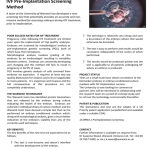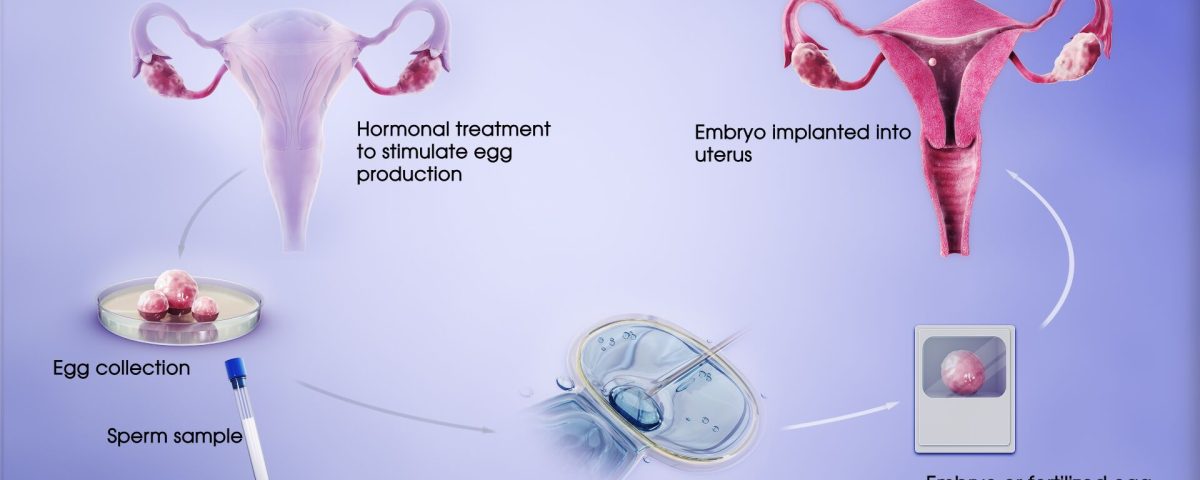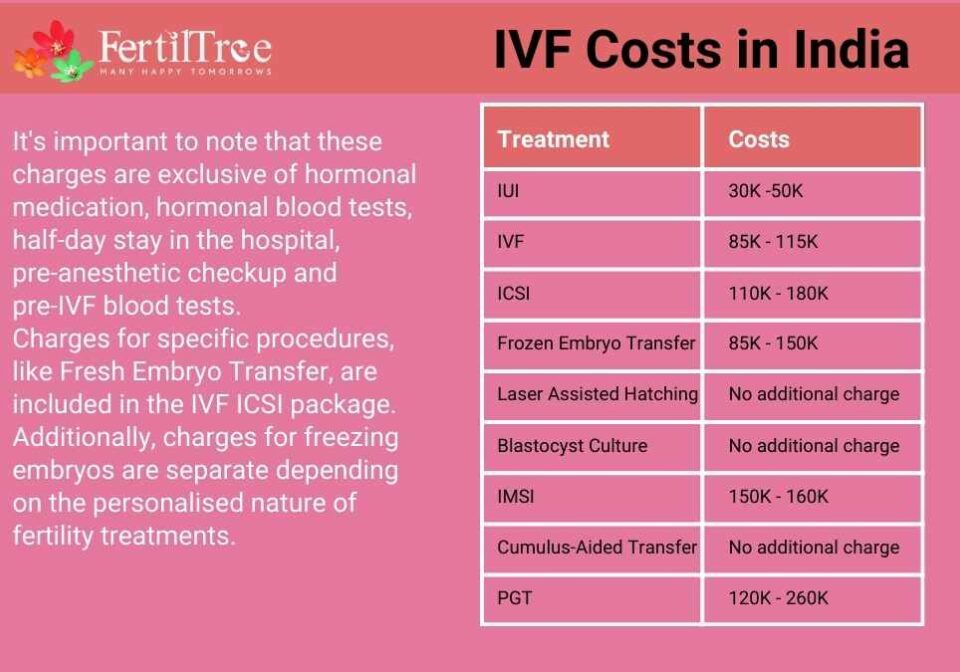
Will TRICARE Cover IVF? Your Guide to Fertility Benefits for Military Families
April 10, 2025
What Is Precycle Screening for IVF?
April 10, 2025Which Is Associated with IVF-ET? Exploring In Vitro Fertilization and Embryo Transfer

Which Is Associated with IVF-ET? Exploring In Vitro Fertilization and Embryo Transfer
In vitro fertilization and embryo transfer (IVF-ET) is a life-changing process for so many people dreaming of starting a family. If you’ve heard about it—or maybe you’re considering it yourself—you might be wondering what it’s all about. What steps are involved? What boosts its chances of success? And what challenges might pop up along the way? This isn’t just a medical procedure; it’s a journey filled with hope, science, and sometimes a few surprises. Let’s dive into everything you need to know about IVF-ET, from the basics to the latest trends, with some fresh insights you won’t find everywhere else.
What Is IVF-ET, Anyway?
IVF-ET stands for in vitro fertilization and embryo transfer. It’s a type of assisted reproductive technology (ART) where doctors help bring an egg and sperm together outside the body—“in vitro” means “in glass,” like in a lab dish. Once the egg is fertilized and grows into an embryo, it’s transferred into the uterus, hoping it’ll implant and lead to a pregnancy.
Think of it like giving nature a little nudge. For couples facing infertility—whether it’s due to blocked fallopian tubes, low sperm count, or unexplained reasons—IVF-ET offers a chance to bypass some of those hurdles. It’s not magic, but it’s pretty close when you see how far science has come.
The process usually takes a few weeks per cycle and involves several steps:
- Ovarian Stimulation: Medications help your ovaries produce multiple eggs instead of just one.
- Egg Retrieval: A quick procedure collects those eggs from your ovaries.
- Fertilization: In the lab, sperm meets egg—either naturally or with a tiny assist called ICSI (intracytoplasmic sperm injection).
- Embryo Growth: The fertilized eggs grow into embryos over a few days.
- Embryo Transfer: One or more embryos are placed into the uterus.
Pretty cool, right? But there’s so much more to it than just the steps. Let’s explore what’s really associated with IVF-ET—things that make it work, things that can trip it up, and what’s new in the world of fertility.
What Makes IVF-ET Successful?
Success in IVF-ET isn’t guaranteed, but certain factors can tip the scales in your favor. Age, health, and even lifestyle play big roles. Here’s what’s tied to those exciting positive pregnancy tests.
Age: The Biggest Player
Your age is one of the top things linked to IVF-ET success. Younger women—especially those under 35—tend to have higher success rates. According to the CDC, about 55% of IVF cycles in women under 35 lead to a live birth from the first try (meaning the first egg retrieval). That number drops as you get older:
- Ages 35-37: Around 40%.
- Ages 38-40: Down to 26%.
- Over 40: Closer to 8%.
Why? It’s all about egg quality. As we age, eggs are more likely to have chromosomal issues, which can make it harder for embryos to implant or develop properly. If you’re over 40, don’t lose hope—donor eggs can boost your odds significantly.
Embryo Quality Matters
Not all embryos are created equal. High-quality embryos—those with the right number of cells and no weird quirks—are more likely to stick around in the uterus. Labs grade embryos based on how they look under a microscope, and some clinics even use fancy tech like time-lapse imaging to watch them grow in real time. Better embryos mean better chances.
Fresh vs. Frozen Embryos
Here’s something interesting: frozen embryo transfers (FET) are gaining ground. Studies show that FET can sometimes outperform fresh transfers. Why? Freezing gives your body a break after all those stimulation meds, letting your uterus get back to a more natural state before the embryo arrives. A 2021 study found that women using FET had a 47% pregnancy rate compared to 35% with fresh transfers. Pretty neat twist, huh?
Lifestyle Tweaks You Can Make
Your habits are tied to IVF-ET outcomes too. Smoking, heavy drinking, and being super stressed can lower your odds. On the flip side, eating a balanced diet, staying active (but not overdoing it), and keeping a healthy weight can help. One study even suggested that women who eat more fruits and veggies might see a slight bump in success rates. Small changes, big impact!
Quick Tip: Want to see where you stand? Try this mini-quiz:
- Are you under 35? ✔️ Yes / ❌ No
- Do you avoid smoking and excess alcohol? ✔️ Yes / ❌ No
- Is your BMI between 19 and 30? ✔️ Yes / ❌ No
More checks mean you’re starting off strong!
What Challenges Come with IVF-ET?
IVF-ET isn’t all smooth sailing. There are bumps along the road—some physical, some emotional, and some just plain unexpected. Knowing what’s associated with these challenges can help you prepare.
Ovarian Hyperstimulation Syndrome (OHSS)
One risk tied to IVF-ET is OHSS. When your ovaries get too excited from those stimulation meds, they can swell up and leak fluid into your belly or chest. Symptoms like bloating, pain, or trouble breathing might show up. It’s rare—only about 1-5% of cycles—but it’s something doctors watch closely. Mild cases just need rest, but severe ones might mean a hospital visit.
Multiple Pregnancies
If more than one embryo is transferred, you could end up with twins or triplets. Sounds fun, right? But it’s also riskier for both mom and babies—think preterm birth or low birth weight. Clinics are trending toward single embryo transfers (SET) to cut this risk, and success rates are still solid. In 2021, the multiple birth rate from IVF dropped to just 5% in the UK, thanks to this shift.
Emotional Rollercoaster
The emotional side of IVF-ET doesn’t get enough airtime. You’re hopeful one day, anxious the next, and maybe crushed if it doesn’t work. Studies show that couples going through IVF often feel more stress than those trying naturally. Having a support system—friends, family, or even online communities—can make a huge difference.
Costs That Add Up
Money’s a biggie. A single IVF-ET cycle can cost $12,000-$15,000 in the U.S., and insurance doesn’t always cover it. Add in meds, extra tests, or frozen transfers, and it climbs higher. Some folks need 2-3 cycles, pushing the total to $60,000 or more for a baby. It’s a lot, but there are grants and financing options out there if you dig around.
New Trends Shaking Up IVF-ET
The world of IVF-ET is always evolving. Scientists and doctors are tinkering with new tools and tricks to make it better. Here’s what’s buzzing right now—and how it’s connected to your fertility journey.
AI and Embryo Selection
Artificial intelligence (AI) is stepping into the lab. Instead of just eyeballing embryos, AI can analyze thousands of images to pick the ones most likely to implant. It’s like having a super-smart assistant who never sleeps. Early data shows AI could bump success rates by 10-15%. Imagine an algorithm saying, “This one’s your winner!”—it’s wild but real.
Mitochondrial Boosts
Ever heard of mitochondrial injection? It’s a newer idea where doctors take mitochondria (the energy powerhouses in cells) from your own ovarian cells and inject them into your eggs during IVF-ET. The goal? Give older or weaker eggs a power-up. A small 2022 study saw live births jump in women who’d had poor embryo growth before. It’s still experimental, but it’s a game-changer worth watching.
Microfluidics: Tiny Tech, Big Help
Microfluidics is another cool twist. These mini devices use tiny channels to sort sperm or grow embryos in a setup that mimics the body better than a dish. Researchers say it could improve fertilization rates and cut costs. It’s not in every clinic yet, but it’s tied to the future of IVF-ET for sure.
Poll Time: Which new IVF-ET trend excites you most?
- AI picking embryos
- Mitochondrial injections
- Microfluidics
Drop your vote in your head and let’s keep rolling!
Lesser-Known Factors Linked to IVF-ET
Most articles cover the big stuff—age, embryos, costs—but there are some under-the-radar things associated with IVF-ET that deserve a spotlight. These nuggets could give you an edge or just make you go, “Huh, didn’t know that!”
Your Uterine Lining’s Secret Role
The endometrium (your uterine lining) is like the welcome mat for an embryo. If it’s too thin or too thick, implantation might fail. Doctors aim for a lining of 7-10 mm, but here’s the kicker: new research hints that blood flow to the lining matters just as much. A 2023 study found women with better uterine blood flow had a 20% higher implantation rate. Acupuncture or certain meds might help rev it up—ask your doc!
Sperm DNA Damage
We talk a lot about eggs, but sperm’s got a starring role too. If the sperm’s DNA is fragmented (think of it like a scratched CD), it can mess with embryo development. A 2020 study linked high sperm DNA damage to lower IVF-ET success, even with good-looking embryos. Antioxidants like vitamin C or CoQ10 might help guys improve their swimmers—worth a chat with a specialist.
The Gut-Fertility Connection
Your gut might seem unrelated, but it’s sneaking into IVF-ET talks. A healthy microbiome (those good bacteria in your belly) could affect how your body handles fertility meds or inflammation. A small 2024 pilot study found women with diverse gut bacteria had slightly higher pregnancy rates after IVF. Probiotics or a fiber-rich diet might be an easy add-on—nothing proven yet, but it’s a fresh angle!
Practical Tips for Your IVF-ET Journey
Ready to take on IVF-ET? Here’s how to stack the deck in your favor, broken down into doable steps and smart moves.
Before You Start
- Pick the Right Clinic: Success rates vary big-time between clinics. Check the CDC’s ART reports for live birth rates at places near you. A clinic with a 10% higher rate could be worth the drive.
- Get a Full Checkup: Beyond basic fertility tests, screen for thyroid issues or vitamin D levels—both can quietly mess with IVF-ET.
- Team Up: Talk to your partner about roles. Who’s handling meds? Who’s keeping spirits high? It’s a duo effort.
During the Cycle
- Stay Organized: Use a calendar app to track shots, appointments, and rest days. Missing a dose can throw things off.
- Mind Your Body: Light walks or yoga can ease stress, but skip the marathon training—overexercise can hurt egg quality.
- Ask About Add-Ons: Things like embryo glue or endometrial scratching are hot topics. Research shows mixed results, so weigh the cost vs. benefit with your doctor.
After the Transfer
- Rest, but Don’t Freeze: Bed rest isn’t needed—studies say normal activity is fine. Just avoid heavy lifting for a day or two.
- Watch for Signs: Mild cramping or spotting can be normal, but fever or severe pain? Call your clinic ASAP.
- Wait Smart: The two-week wait is brutal. Distract yourself with a new hobby—knitting, anyone?—instead of overanalyzing every twinge.
A Peek at Real-Life IVF-ET Stories
Numbers and science are great, but real stories hit different. Here are two quick ones to show what IVF-ET can look like—and how it’s tied to unique twists.
Sarah’s Frozen Win
Sarah, 38, tried IVF-ET twice with fresh embryos and got nada. Her doctor suggested freezing the next batch and waiting a month. Third time’s the charm—she’s now mom to a spunky toddler. The break between stimulation and transfer gave her body the reset it needed. Frozen embryos aren’t just backups; they can be MVPs.
Mike and Jen’s Sperm Surprise
Mike and Jen, both 32, hit a wall with IVF-ET despite great embryos. Turns out, Mike’s sperm had high DNA damage from years of smoking. After three months of quitting and popping antioxidants, their next cycle worked. Baby Liam’s here, and they’re proof that sperm health isn’t just a side note—it’s a big deal.
Busting IVF-ET Myths
There’s a lot of noise out there about IVF-ET. Let’s clear up some myths that keep floating around.
- Myth: IVF-ET always means twins.
Truth: Nope! Single embryo transfers are the norm now, dropping multiple births to under 5% in many places. - Myth: It’s only for women with issues.
Truth: Male factors—like low sperm count—drive 35% of infertility cases. IVF-ET helps both sides. - Myth: It works every time.
Truth: Even with perfect conditions, it’s about a 50-55% shot per cycle for young folks. Patience is key.
What’s Next for IVF-ET?
The future’s looking bright—and a little sci-fi. Beyond AI and microfluidics, researchers are digging into gene editing (like CRISPR) to fix embryo glitches before transfer. Ethical debates are heating up, but it could mean fewer miscarriages down the road. Plus, “IVF-on-a-chip” systems might one day shrink the lab into a handheld device. Crazy, right?
Checklist for the Future: What would you want from IVF-ET in 10 years?
- ✔️ Higher success rates
- ✔️ Lower costs
- ✔️ Less stress
Dream big—it’s coming!
Wrapping It Up: Your IVF-ET Takeaway
IVF-ET is a mix of science, hope, and a dash of grit. It’s tied to your age, embryo quality, and even your gut bugs in ways you might not expect. Challenges like OHSS or costs can pop up, but new tricks—AI, frozen transfers, mitochondrial boosts—are pushing the odds higher. Whether you’re just curious or knee-deep in the process, knowing what’s associated with IVF-ET gives you power. It’s not a straight path, but it’s one millions have walked—and many have ended up with a baby in their arms.
So, what’s your next step? Maybe it’s a chat with a doctor, a lifestyle tweak, or just soaking in the possibilities. Whatever it is, you’ve got this—and the science is rooting for you too.

